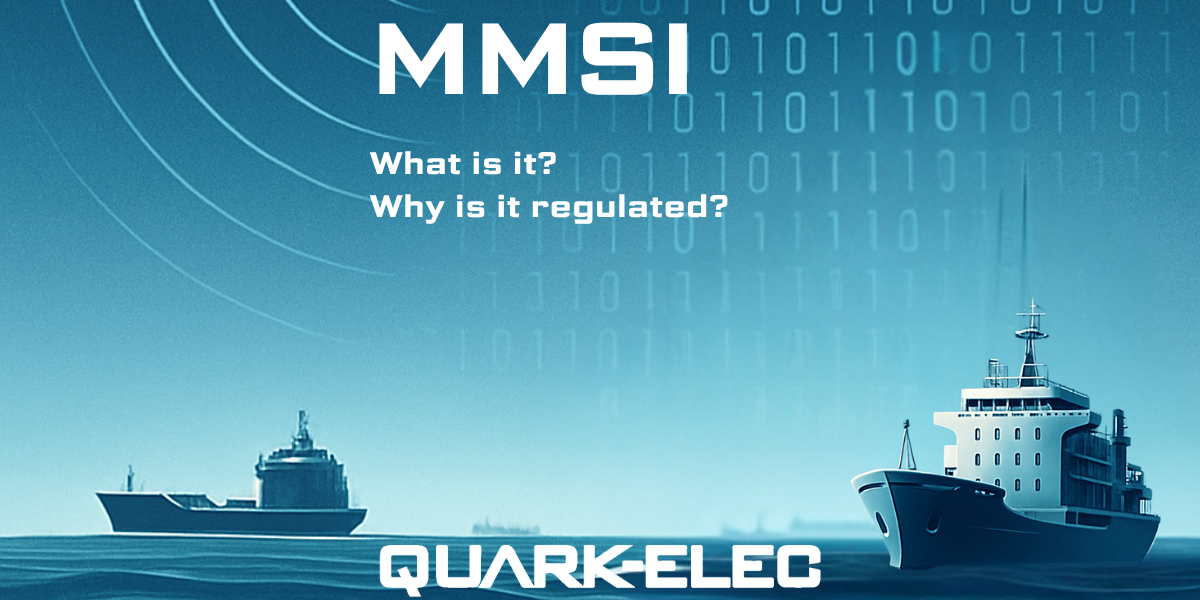MMSI: What It Is and Why It’s Regulated
Imagine you’re setting sail on a calm afternoon. The radio crackles, a digital distress alert flashes across your screen. Within seconds, rescue services know exactly which vessel sent it, where it is, and how to reach it.
That’s not luck! It’s the Maritime Mobile Service Identity, (MMSI) in action!
⚓ What Is an MMSI?
An MMSI (Maritime Mobile Service Identity) is a unique nine-digit number assigned to ships, coastal stations, and certain marine equipment like AIS transponders and DSC-enabled VHF radios.
Think of it as a digital license plate or phone number for your vessel. It identifies your boat in radio communications, data transmissions, and emergency alerts.
⚠️ Important: MMSIs cannot be transferred between vessels. If you buy a new boat, you must apply for a new number. Or in the case of an MMSI already being present, you must contact the appropriate authorities to ensure the details are up to date.
When you press the distress button on your VHF radio, your MMSI number tells search and rescue teams, as well vessels near by, who you are, and if your system is GPS-linked, where you are. It’s an essential piece of digital identity in modern maritime safety.
It’s a vital part of maritime safety communication systems worldwide.
📡 How MMSI Works
Every MMSI number is encoded into your vessel’s radio and navigation systems. When you send a signal, whether a routine call, position update, or emergency distress alert, your vessel’s MMSI travels with it.
Here’s how it works in practice:
- Your vessel’s MMSI identifies you uniquely across global communication systems.
- Other ships, coast stations, and authorities see your identity automatically on their displays.
- In a distress situation, rescue coordination centers can instantly access your registration details.
MMSIs are structured with logic:
- First three digits (MID): Identify your country
- Remaining digits: Identify your vessel
Example:
- UK vessels: Begin with 232,233,234,235
- U.S. vessels: Begin with 366
🌍 Why MMSI Is Regulated
You might wonder, it is only a short number, so why does it need to be regulated?
Because maritime communication isn’t just local , it’s global. Ships cross borders every day, and radio frequencies don’t stop at coastlines. A single unregistered or duplicated MMSI could cause confusion, missed distress calls, or even false alarms.
That’s why MMSIs are managed under international agreements by:
- International Telecommunication Union (ITU) – global numbering standards
- International Maritime Organization (IMO) – maritime safety rules
- National agencies (e.g. FCC, Ofcom) – issue and maintain databases
This regulation ensures:
- Safety: Every distress call can be trusted as genuine and traceable, potentially saving lives.
- Clarity: No two vessels share the same MMSI, avoiding signal conflicts.
- Accountability: Authorities can identify and contact vessel owners when needed.
- Security: Prevents misuse of communication channels by unauthorized operators.
In short MMSI regulation keeps the global maritime communication network orderly, secure, and reliable.
🛥️ How to Get an MMSI (and Why You Need One)
If your boat has a VHF radio with DSC (Digital Selective Calling) or an AIS transponder (such as our A051T or A052T, you’ll need an MMSI.
For domestic boating:
Apply through your authorized maritime organization, such as:
- BoatUS (United States)
- Royal Yachting Association (RYA) (United Kingdom)
For international boating:
Apply via your national communication authority (e.g., the FCC in the U.S.)
When registering, you’ll need details like:
- Vessel name, type, and size
- Owner’s contact information
- Details of your radio equipment
Once approved, you’ll receive your nine-digit MMSI to program into your radio and AIS.
⚠️ Important: Never reuse an old MMSI. It’s unique to your vessel. If you change boats, reapply for a new one and reset your VHF/AIS units per manufacturer instructions.
⚠️ What Happens If You Don’t Have One
Operating without a valid MMSI may seem harmless, until there’s an emergency.
Without one:
- Your distress signal may not transmit properly.
- Other vessels can’t identify you digitally.
- You could face regulatory penalties for unauthorized transmissions.
In emergencies, seconds count, and a missing MMSI can delay rescue efforts. Registering your vessel is simple , and could be life-saving.
💡 Common Myths About MMSI
| Myth | Truth |
|---|---|
| “Only big ships need MMSIs.” | Even small leisure craft with DSC or AIS require one. |
| “All MMSIs are international.” | Not always, domestic MMSIs can’t be used in international waters. |
| “It’s just a number; it doesn’t matter.” | It’s tied to global rescue databases and vessel identity. |
| “I can reuse my old MMSI.” | MMSIs are assigned to vessels, not people. Changing ownership usually means re-registration. |
🌊 Why MMSI Is More Than Just a Number
Your MMSI number is more than a regulatory requirement, it’s your vessel’s digital voice on the ocean.
It ensures that:
- Your communications reach the right recipients.
- You can be located quickly in emergencies.
- You’re part of a global safety network based on trust and precision.
Before your next voyage, confirm your MMSI is active and programmed into your radio and AIS systems.
⚓ A simple number could be the difference between life and death. Don’t set sail without it.

